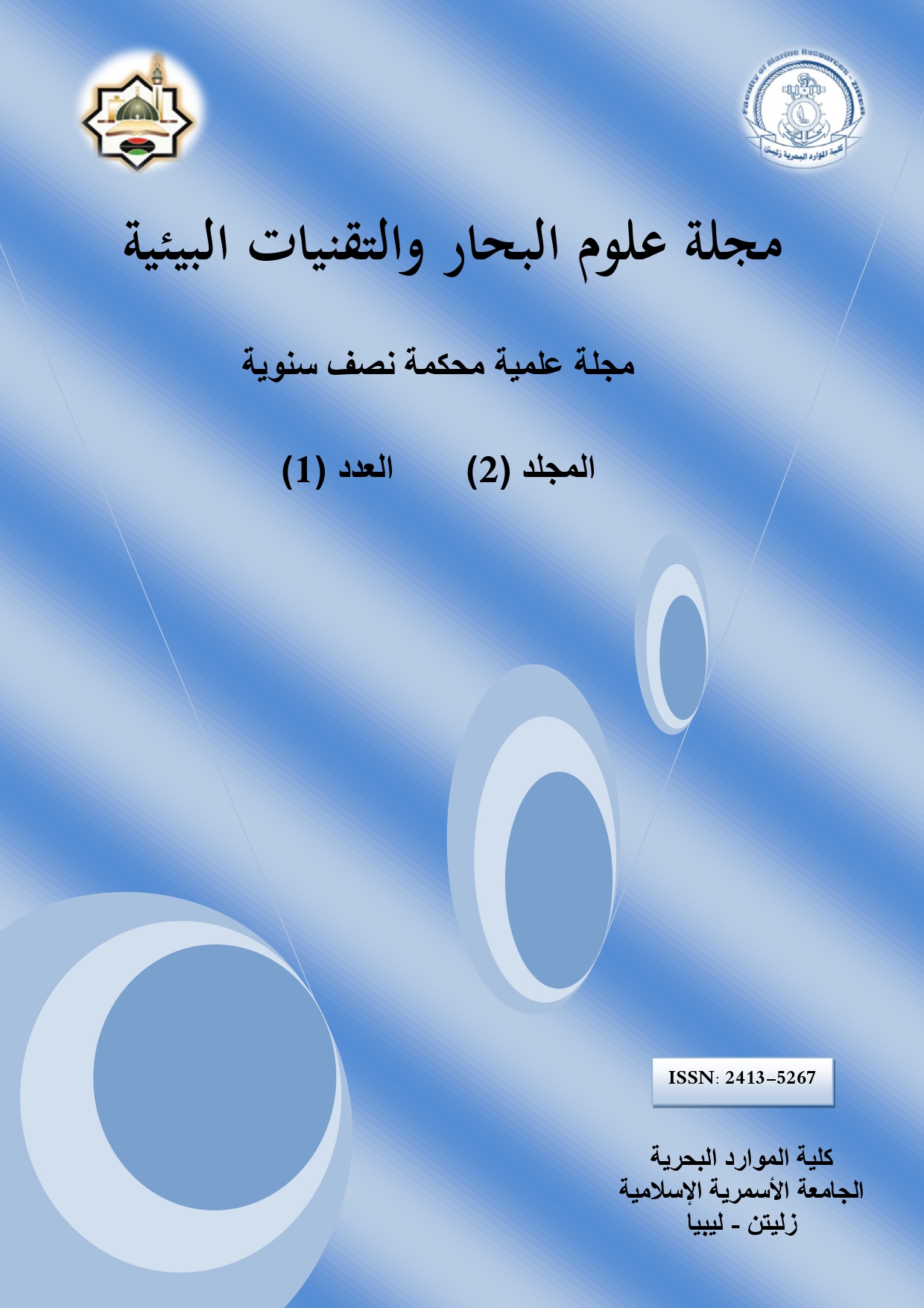ميكروثيرموميتري للموائع المحصورة داخل مادة الكوارتز اللاحمة مع تحديد عمرها في مكمن الحجر النوبي العلوي، بجنوب شرق حوض سرت، ليبيا.
DOI:
https://doi.org/10.59743/jmset.v2i1.113الكلمات المفتاحية:
ميكروثيرموميتري، الحجر الرملي النوبي العلوي، الإسمنت الكوارتزى، الموائع المحصورة داخل مادة الكوارتزالملخص
مادة الكوارتز اللاحمة تعتبر من اهم المواد اللاحمة المؤثرة في خزان الحجر الرملي النوبي العلوي بمنخفض الحميمات بجنوب شرق حوض سرت. إن معرفة العمر والتركيب الكيميائي للموائع القديمة يعتبر ذو اهمية من حيث تقييم جودة المكمن لتتابعات الحجر النوبي العلوي. إن دراسة الميكروثيرموميتري للموائع المحصورة داخل مادة الكوارتز اللاحمة باستخدام النظام المعدل ((U.S.G.S الذي يستخدم الغاز المتدفق للتدفئة مع نظام للتجميد واستخدام نمذجة الأحواض في منطقة الدراسة لتحديد وقت بداية تكون مادة الكوارتز اللاحمة والتركيب الكيميائي للموائع القديمة. نتائج الدراسة أظهرت ان درجة حرارة ترسيب مادة السيليكا تراوحت بين 115 و128 oم وبإستخدام منحنى الردم الناتج من برنامج نمذجة الأحواض تبين أن بداية ترسيب مادة الكوارتز اللاحمة كان في وقت متأخر من عصر الباليوسين ربما من خلال تدفق سائل غني بالسيليكا. وتشير قياسات درجة التجمد للموائع بأن المحاليل المسؤولة عن ترسيب مادة الكوارتز اللاحمة كانت محاليل ملحية معقدة التركيب الكيميائي.
المراجع
Brown P.E. (1989). FLINCOR; a microcomputer program for the reduction and investigation of fluid-inclusion data. American Mineralogist, 74(11-12): 1390-1393.
Burley S.D., Mullis J., and Matter A. (1989). Timing diagenesis in the Tartan reservoir (UK North Sea): Constraints from combined cathodoluminescence microscopy and fluid inclusion studies. Mar. and Petrol. Geol., 6: 98-120.
Goldstein R.H., and Reynolds T.J. (1994). Systematics of fluid inclusions in diagenetic minerals: SEPM (Society for Sedimentary Geology) Short Course 31. Tulsa Oklahoma, USA.
Hanor J.S. (1980). Dissolved methane in sedimentary brines: potential effect on the PVT properties of fluid inclusions. Econ. Geol., 75: 603-609.
Haszeldine R.S., and Osborne M. (1993). Fluid Inclusion Temperatures in Diagenetic Quartz Reset by Burial: Implications for Oil Field Cementation In: Diagenesis and Basin Development. (Ed. Horbury A.D., and Robertson A.G.), Bll. Am. Ass. Petrol. Geol., Tulsa, 35-46.
James W.C., Wilmar G.C., and Davidson B.G. (1986). Role of Quartz type and grain size in silica diagenesis, Nugget Sandstone, south central Wyoming. J. Sed. Petrol., 56: 657-662.
Roedder E. (1984). Fluid inclusions. Ribbe P.H. (Ed.), (Vol. 12, pp. 12-45). Mineralogical Society of America, Washington DC.
Rossi M.E., Tonna M., and Larbash M. (1991). Latest Jurassic-Early Cretaceous Deposits in the Subsurface of the Eastern Sirte Basin (Libya): Facies and Relationships with Tectonics and Sea-Level Changes. In: The Geology of Libya (Ed. By M. J. Salem and A. M. Sbeta and M. R. Bakbak), Elsevier, Amstterdam, 5: 2211-2225.
Sorby H.C. (1858). On the microscopical, structure of crystals, indicating the origin of minerals and rocks. Quarterly Journal of the Geological Society, 14(1-2): 453-500.
Walderhaug O. (1990) A fluid inclusion study of quartz-cemented sandstones from offshore mid-Norway: possible evidence for continued quartz cementation during oil emplacement. Jur. Sed. Petrol., 60: 203-210.
التنزيلات
منشور
إصدار
القسم
الرخصة
الحقوق الفكرية (c) 2016 مجلة علوم البحار والتقنيات البيئية

هذا العمل مرخص بموجب Creative Commons Attribution 4.0 International License.









